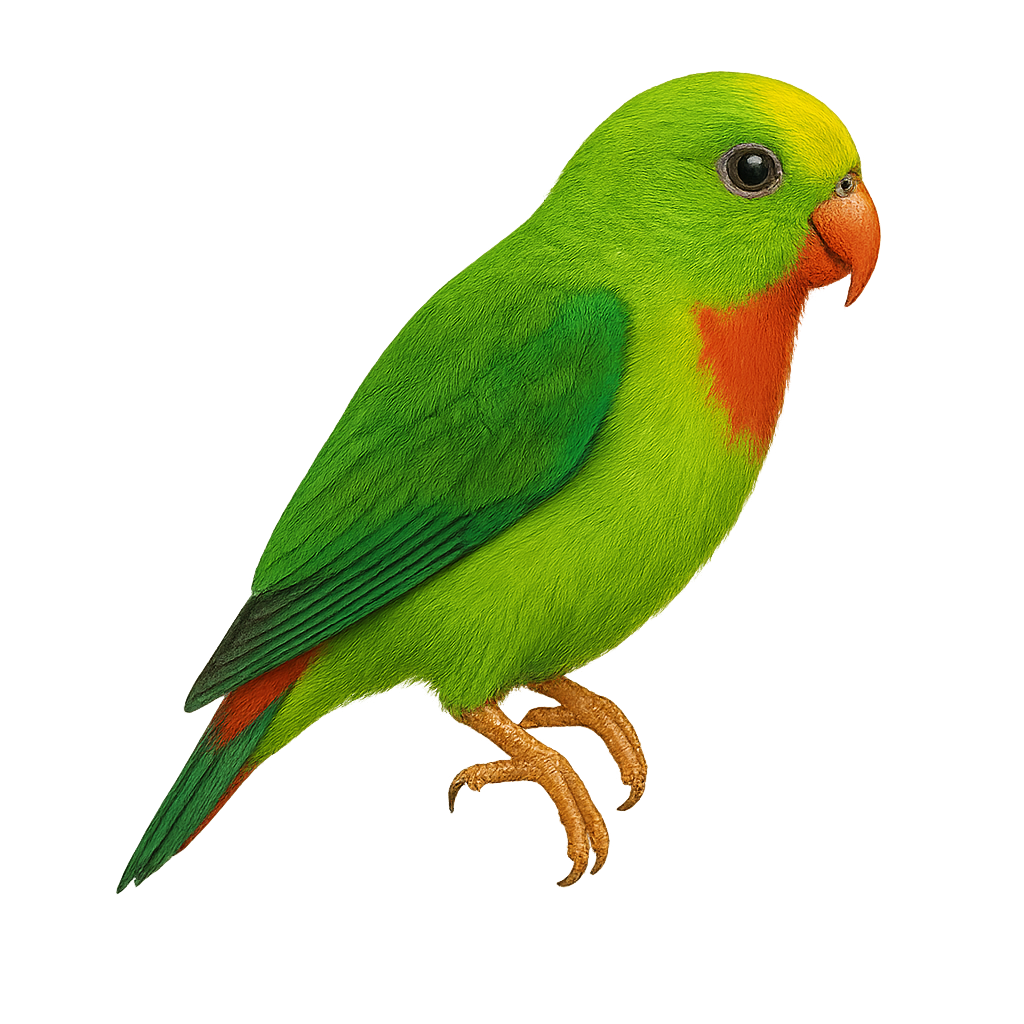Your wildlife photography guide.
Explore the philippine hanging parrot in detail, study its behavior, prepare your shots.
Where to observe and photograph the philippine hanging parrot in the wild
Learn where and when to spot the philippine hanging parrot in the wild, how to identify the species based on distinctive features, and what natural environments it inhabits. The WildlifePhotographer app offers tailored photography tips that reflect the philippine hanging parrot’s behavior, helping you capture better wildlife images. Explore the full species profile for key information including description, habitat, active periods, and approach techniques.
Philippine Hanging Parrot
Scientific name: Loriculus philippensis

IUCN Status: Least Concern
Family: PSITTACIDAE
Group: Birds
Sensitivity to human approach: Suspicious
Minimum approach distance: 5 m
Courtship display: March to April
Incubation: 20-22 jours
Hatchings: March to May
Habitat:
Tropical rainforests, plantations, gardens
Activity period :
Primarily active during the day, with peak activity in the morning and late afternoon.
Identification and description:
The Philippine Hanging Parrot, or Loriculus philippensis, is a small, vibrantly colored parrot endemic to the Philippines. Measuring about 14 cm in length, it is characterized by its bright green plumage, a red patch on the forehead, and a short tail. Males and females are similar, although males often have brighter colors. These birds primarily inhabit tropical rainforests but can also be found in plantations and gardens. They are known for their acrobatic behavior, often hanging upside down to feed on fruits, flowers, and nectar. Their song is a mix of whistles and chirps.
Recommended lens:
400 mm – adjust based on distance, desired framing (portrait or habitat), and approach conditions.
Photography tips:
To photograph the Philippine Hanging Parrot, it is advisable to use a 400mm lens or longer to capture precise details of its colorful plumage. Look for it in tropical rainforests or gardens where it feeds. Be patient and discreet, as this bird can be suspicious. Try to capture it when it is hanging upside down, a typical position when feeding. Early morning hours are best to take advantage of soft, natural light.
The WildlifePhotographer App is coming soon!
Be the first to explore the best nature spots, track rutting seasons, log your observations, and observe more wildlife.
Already 1 432 wildlife lovers subscribed worldwide

